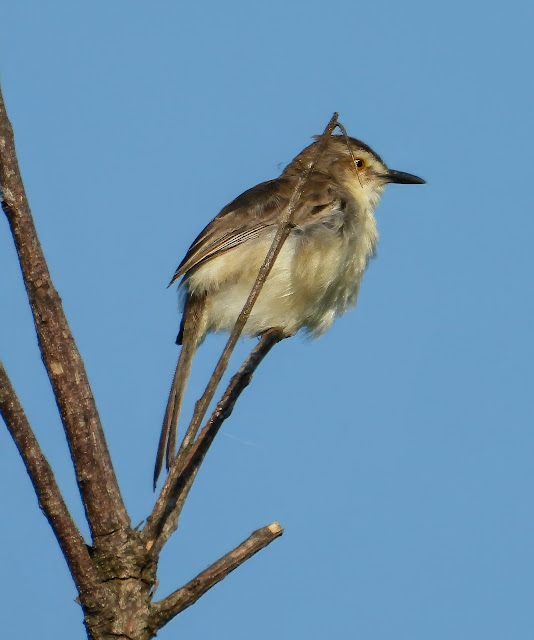In the non-breeding season, the Plain Prinia's upperparts transition to a warmer brown, and the underparts take on a more pronounced buff color. The tail elongates during this period. Geographic variations exist among the subspecies, with differences in plumage shade. Notably, the endemic Sri Lankan race maintains its summer plumage and shorter tail throughout the year.

This resident breeder's range extends from Pakistan and India to South China and Southeast Asia. It was once considered conspecific with the Tawny-flanked Prinia, which is found in Africa south of the Sahara, but they are now generally recognized as separate species.
The Plain Prinia is a skulking bird, often remaining hidden within its preferred habitats. It constructs its nest within a shrub or amidst tall grasses, where it lays a clutch of three to six eggs. This contrasts with the Tawny-flanked Prinia, which prefers to nest in herbage and typically lays two to four eggs.


%201.jpg)



